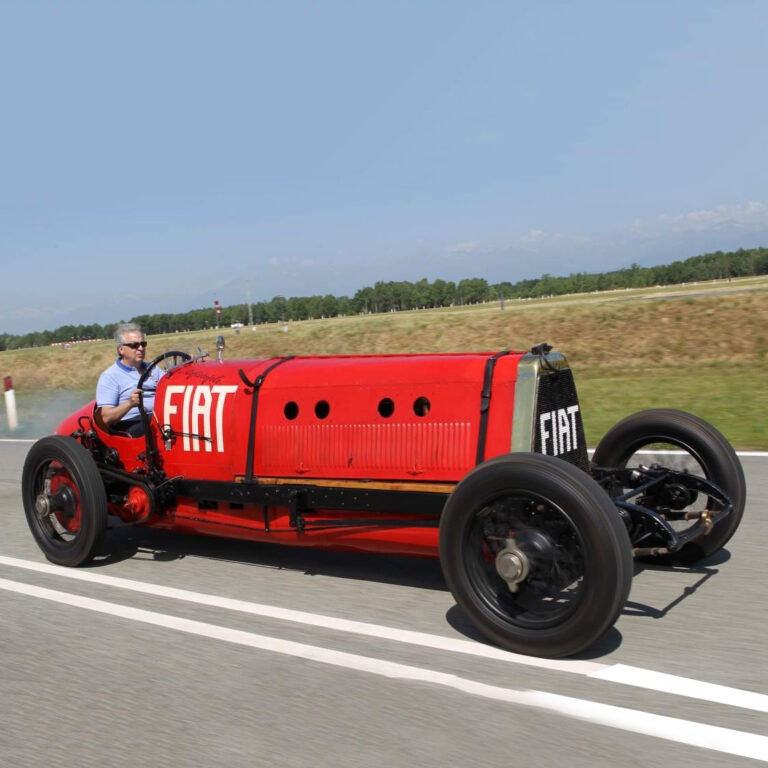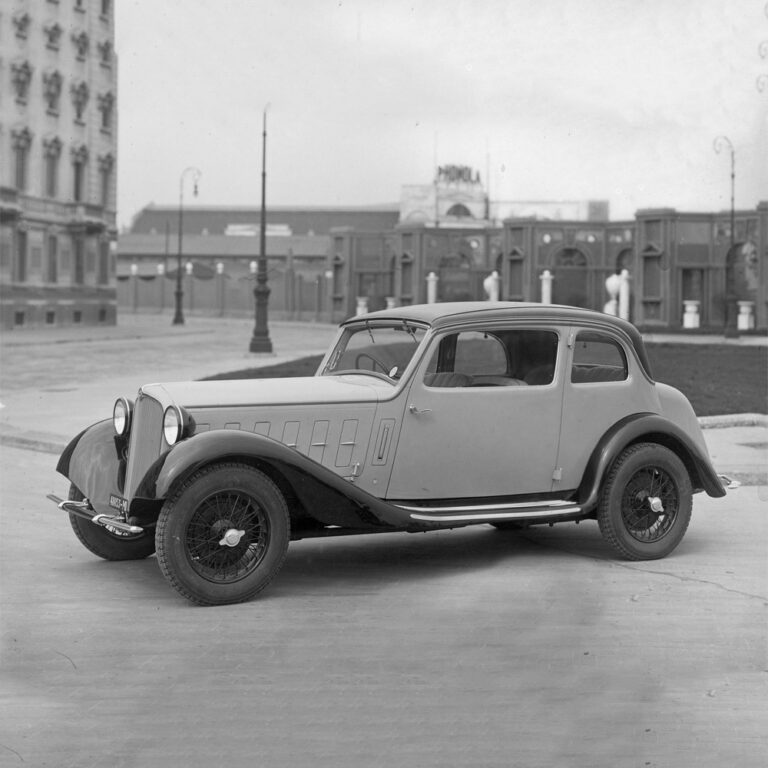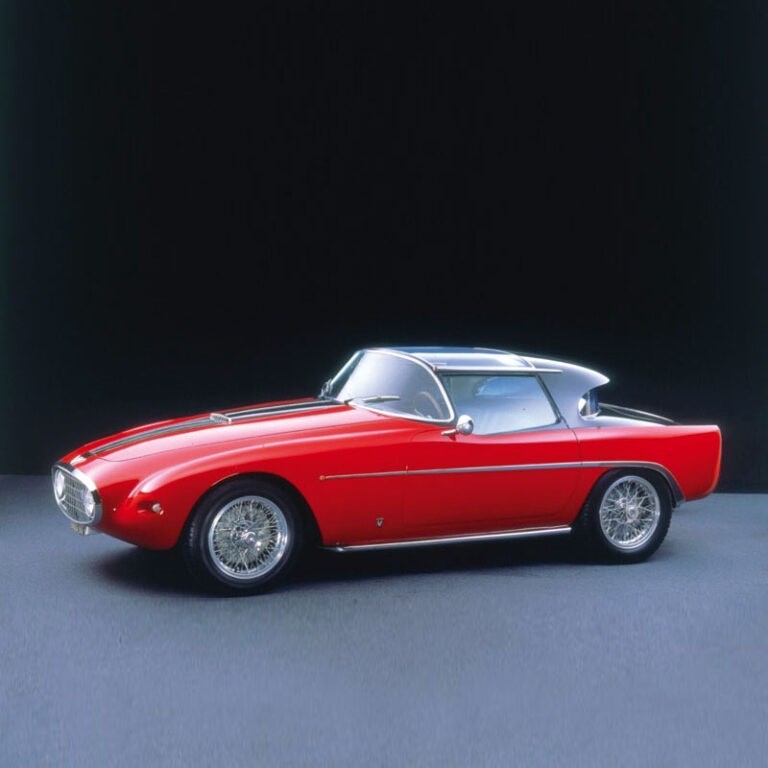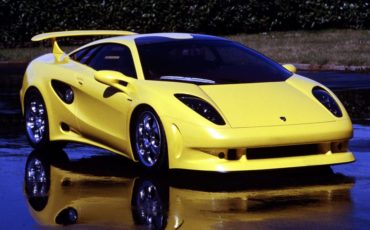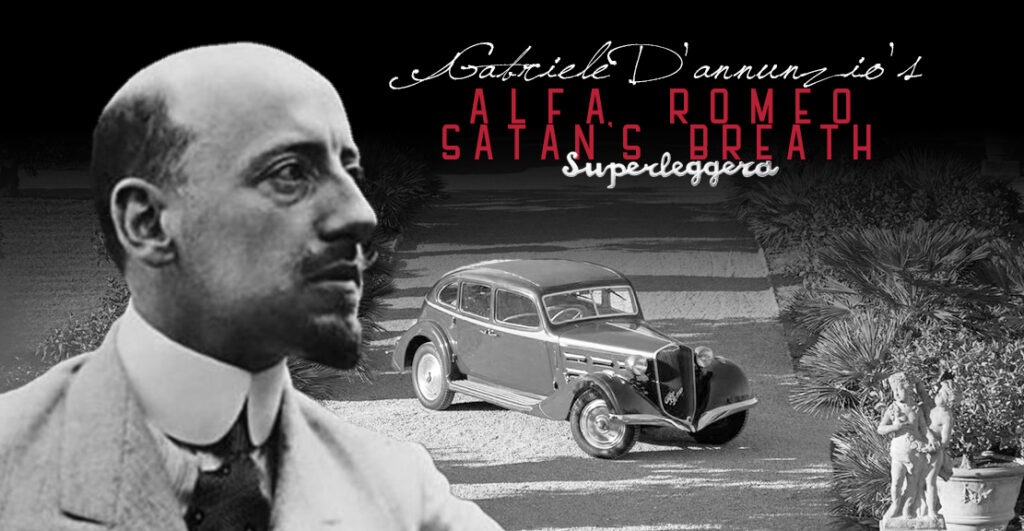
“Soffio di Satana” is the moniker coined by Eng. Anderloni, the founder of Carrozzeria Touring Superleggera, for a model of the Alfa Romeo 6C 2300 Turismo. Anderloni meticulously designed and crafted this model with a distinctive, aerodynamic, and exquisitely elegant style. During that era, it was a trend to assign demonic names to exceptionally beautiful, aggressive, and captivating cars, evoking the allure of speed and the mythical notion of the demon.
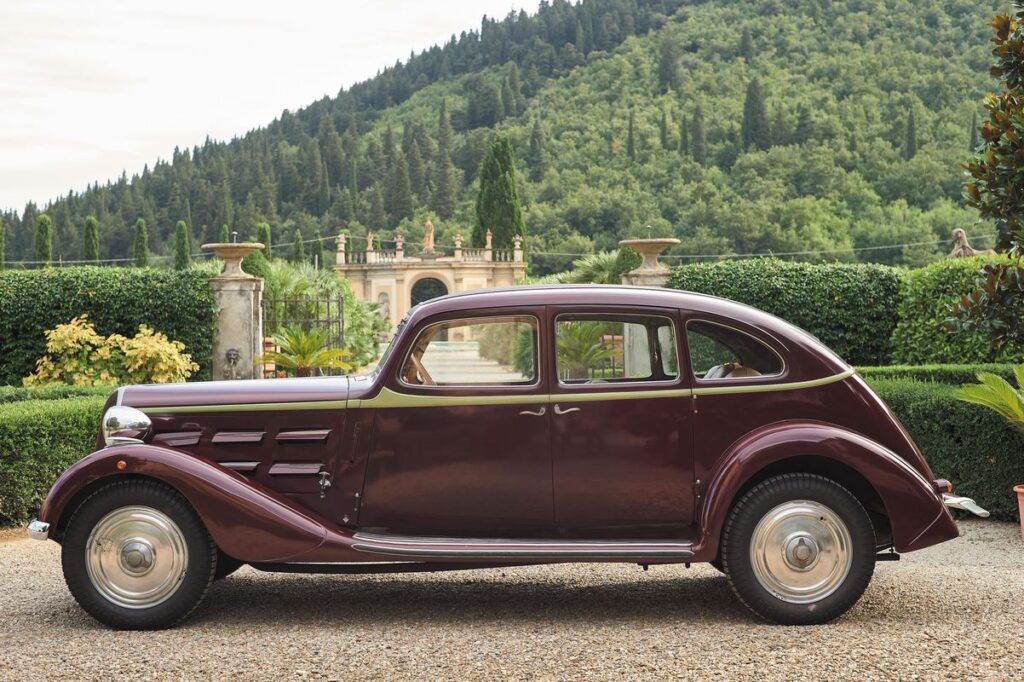
Indeed, within the automotive world of those days, names carry a distinct resonance, each chosen to encapsulate the essence of a vehicle. Fiat embraced the provocative moniker “Mefistofele,” Alfa Romeo, with its Touring coachwork, earned the nickname “Freccia di Belzebú” (Beelzebub’s Arrow), and the subject of our discussion today, a car that resonates with a resounding name – ‘Soffio di Satana’ (Satan’s Breath).
In 1953 Giovanni Michelotti, in collaboration with Carrozzeria Vignale, brought forth a striking one-off creation. This Fiat 8V, baptized the “Demon Rouge” (Red Devil in French), embodied aggression and speed. The zeitgeist of that era was characterized by the penchant for bestowing satanic names upon cars, a practice aimed at exalting superhuman strength and velocity.
In this context, it was the creative genius of Eng. Anderloni that manifested in the refined design of the Alfa Romeo Turismo 6C 2300. Anderloni, recognizing the cultural and thematic significance of automotive nomenclature, christened his creation with the evocative name ‘Soffio di Satana.’ This title not only captured the imagination but also became a symbol of the era’s fascination with the interplay between power, speed, and the mystical allure associated with the name.
Contrary to common belief, it wasn’t Gabriele D’Annunzio who bestowed the car with its distinctive title. Furthermore, the creation of this model was not tailored explicitly for D’Annunzio; instead, there existed an initial vermilion-hued version that graced the display window of the Alfa Romeo dealership showroom at Piazza Castello in Milan for approximately two months. Interestingly, this particular automobile was not destined for the famed poet but was instead acquired by none other than the renowned singer, Gina Cigna.
During those vibrant days of exhibition, Gina Cigna, an illustrious star of her time renowned for her unmatched voice and captivating stage presence, encountered the car. Having just returned from her successful performances in America, she chanced upon the vehicle showcased in the Alfa Romeo showroom in Milan. Enamored by its allure, she promptly decided to make it her own. The transaction transpired swiftly, and the car was delivered to her within a few days, allowing ample time for the completion of sales and registration formalities
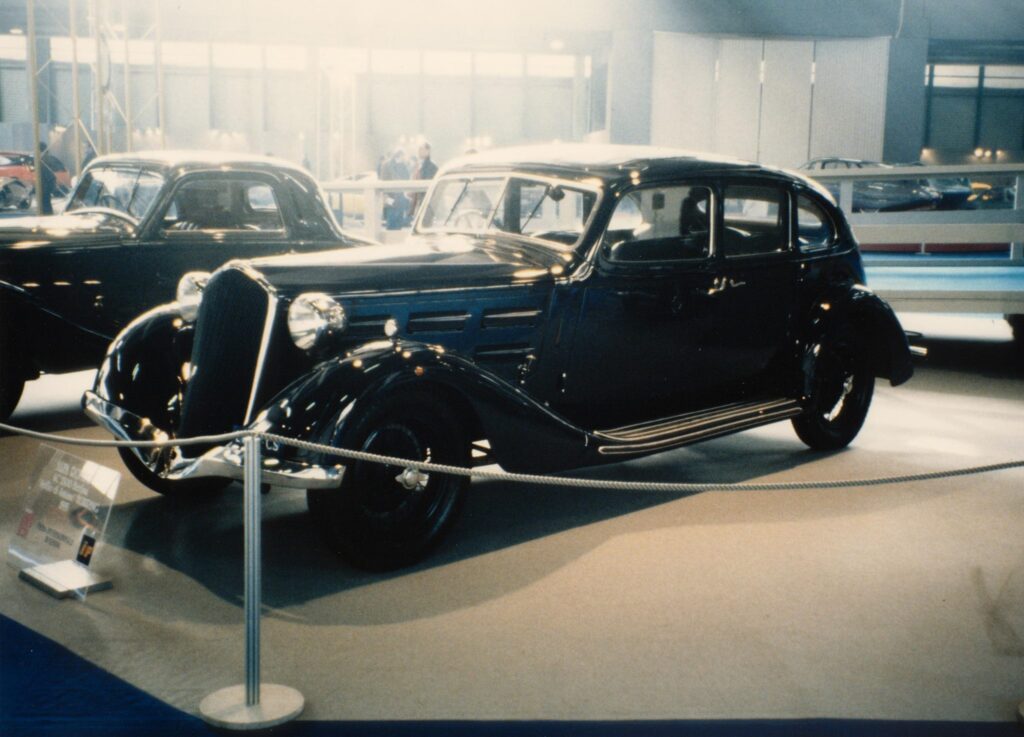
In this intriguing turn of events, the iconic car found a home with Gina Cigna, a luminary in the world of opera, thus emphasizing that its allure transcended any singular association and resonated with individuals from diverse walks of life who appreciated its aesthetic charm and performance capabilities.
The day following the acquisition of the Alfa Romeo Soffio di Satana, D’Annunzio found himself once again in the Alfa Romeo showroom at Piazza Castello. As an unwavering admirer of Alfa Romeo, he was in search of a new representative car to add to his collection. Upon laying eyes on the Soffio di Satana, D’Annunzio was immediately drawn to its allure.
To his disappointment, he was informed that the very Soffio di Satana that captivated him had been sold the previous day to another customer, rendering it unavailable for purchase. Undeterred, D’Annunzio expressed his desire for an identical model and promptly left a substantial deposit. Within an impressive timeframe of 20 days, Alfa Romeo delivered the second iteration of the ‘Soffio di Satana’ directly to his residence at the Vittoriale degli Italiani. This bespoke model was crafted exclusively for him, marking the year 1934 as the birth year of this exceptional vehicle in his collection. The expedited delivery reflected the brand’s commitment to satisfying the desires of its esteemed clientele, especially one as distinguished as D’Annunzio.
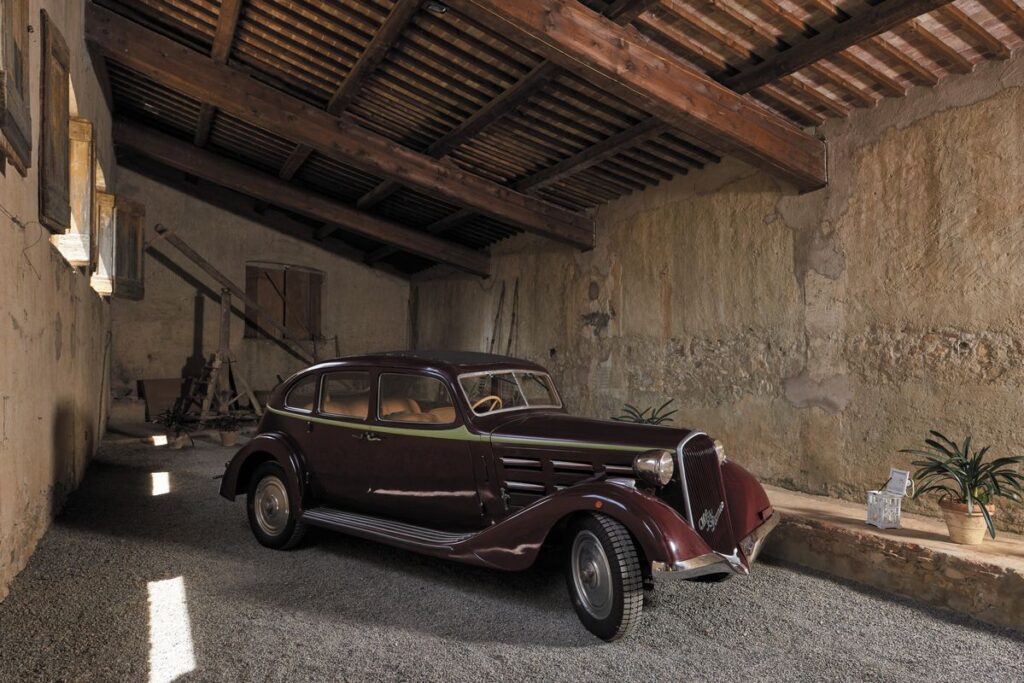
The Soffio di Satana today
The saga of the Alfa Romeo Soffio di Satana took an intriguing turn in 1946 when it was sold by the Commissioner of the Vittoriale. Following this transaction, the car mysteriously vanished from the radar, confounding experts in the field who believed it had disappeared without a trace. Unbeknownst to many, the vehicle was being safeguarded by an enigmatic collector until it made a dramatic reappearance in 2017, ready to be auctioned in Florence.
Pandolfini Auction House of Florence presented the rediscovered gem as a ‘strong piece,’ assigning it an estimated value ranging between 500,000 and 700,000 euros. The auction saw the Alfa Romeo Soffio di Satana find a new owner, a collector who secured it for approximately 450,000 euros. However, the narrative took a legal twist as the judiciary intervened, seizing the vehicle and classifying it as an ‘inalienable asset’ of the Vittoriale.
The historical significance of the car added layers to its story, as it had served as the preferred mode of transport for the renowned poet d’Annunzio in the final years of his life at the Vittoriale. Notably, the vehicle was used to welcome guests at Desenzano station and for the poet’s personal excursions. It even played a role in the romantic affairs of d’Annunzio, being the means through which his last lover, the young countess Evelina Scapinelli Morasso, arrived from Milan.
After d’Annunzio’s passing, ownership of the Soffio di Satana transferred to the ‘Fondazione del Vittoriale degli Italiani.’ In 2019, the car finally returned to its ‘home,’ completing a fascinating journey that intertwines automotive history, cultural heritage, and the romantic legacy of one of Italy’s literary giants.

